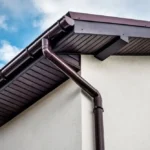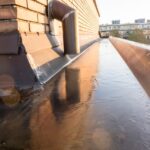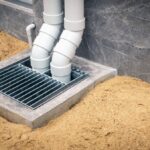When it comes to protecting your home from water damage, proper roof flashing is crucial. Sometimes, homeowners might notice leaks or signs of water intrusion, which can often be attributed to compromised flashing. This is why understanding and implementing DIY tips for roof flashing repair is essential. Not only does it empower you to safeguard your property, but it also provides a cost-effective alternative to hiring professional services.
Ensuring that roof flashing is in top condition is important, as it plays a pivotal role in directing water away from critical areas of your roof. In this article, we will guide you through the necessary steps and considerations for effective flashing repair.

Understanding Roof Flashing
Before delving into repair techniques, lets first establish what roof flashing is. Flashing is a thin material, typically made of metal, that is installed to prevent water from seeping into structures such as chimneys, vents, and joints. Familiarizing yourself with its purpose and functionality will aid you significantly in the repair process.
Common Types of Flashing
Roof flashing comes in various forms, each serving a specific function:
- Step Flashing: Used along the roof edges and with walls.
- Counter Flashing: Covers the step flashing.
- Drip Edge: Guides water runoff into the gutters.
- Valley Flashing: Installed where two roof slopes meet.
Signs You Need to Repair Roof Flashing
Being proactive in identifying signs of flashing damage can save you from more extensive repairs. Here are some indicators:
- Water stains on ceilings or walls.
- Mold growth around openings.
- Visible rust or corrosion on metal flashing.
- Cracked or broken flashing material.
Steps for DIY Roof Flashing Repair
Now that you understand the necessity and types of roof flashing, let’s explore how you can proceed with a DIY repair. Adhering to these steps can ensure a successful project.
1. Gather Necessary Tools and Materials
Before starting any repair, having the right tools is important. Here’s a handy list:
- Replacement flashing material
- Roofing nails and hammer
- Roof sealant
- A ladder
- Safety goggles and gloves
2. Inspect the Roof Flashing
Begin by carefully inspecting your roof for any damaged or loose flashing. A thorough inspection can be done by performing a DIY roof inspection checklist.
3. Remove Damaged Flashing
Once the damaged areas are identified, remove the faulty flashing carefully without causing additional damage to the roofs structure. Ensure you remove all nails and clean the area properly.
4. Install New Flashing
Cut the new flashing material to the correct size and shape. Position it snugly in the required area and secure it using roofing nails. Properly installed, this can prevent future water damage.
5. Seal the Joints
Apply roofing sealant around the edges to reinforce the flashing and create a watertight seal. A detailed guide on sealant application can be found in how to apply roof sealant.
Preventive Tips to Maintain Roof Flashing
Regular maintenance can significantly extend the lifespan of your roof flashing. By keeping a few preventive measures in mind, you can reduce the likelihood of major repairs in the future.
- Conduct regular roof inspections following this roof maintenance guide.
- Keep gutters and downspouts clean to prevent water buildup.
- Trim overhanging trees that could damage your roof during storms.
When to Seek Professional Help
While DIY efforts are commendable, some situations may require professional intervention. If you continue to notice leaks after repair, or if the damage is extensive, it might be time to consult with a roofing specialist. For more insights, check out what type of maintenance does my roof require by CertainTeed.

FAQ
1. Can I fix roof flashing myself?
Yes, with the right tools and guidelines, many homeowners can address minor flashing issues on their own.
2. How often should roof flashing be inspected?
It’s recommended to inspect roof flashing at least twice a year, ideally during seasonal changes.
3. What materials are best for roof flashing?
Metal options like aluminum and galvanized steel are popular due to their durability and resistance to rust.
This article contains affiliate links. We may earn a commission at no extra cost to you.







